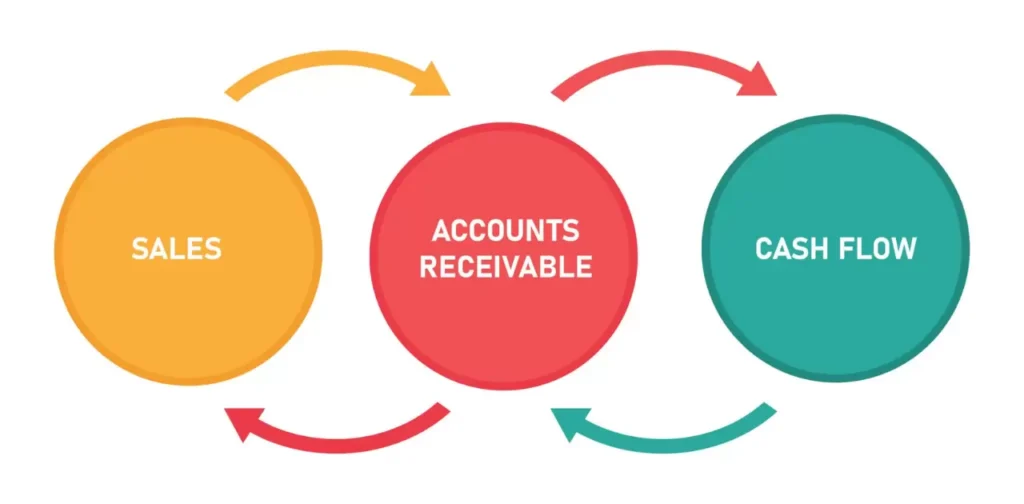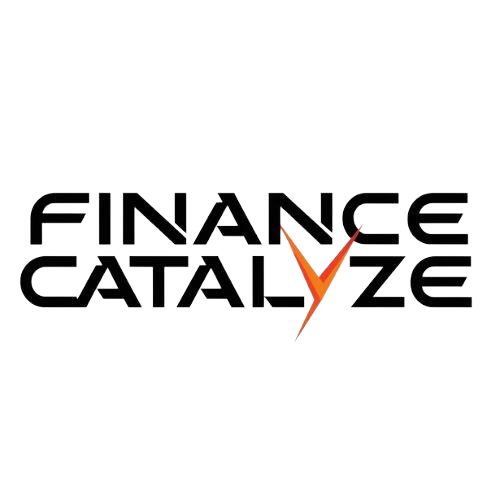Maintaining a steady selling accounts is crucial for any business’s survival but outstanding invoices can severely hinder that. Imagine having to juggle expenses payroll and growth opportunities while waiting endlessly for customers to settle their dues. It is a frustrating predicament that can quickly spiral into a cash flow crisis.
There is a brilliant solution that allows you to swiftly convert those unpaid bills into cold hard cash selling your accounts receivable. In this post we will explore how this innovative financing option can rapidly enhance your company’s liquidity enabling you to seize opportunities tackle expenses and propel your enterprise to new heights.
Accounts Receivable: The Double-Edged Sword
Before diving into the solution, let’s understand the root of the problem. Accounts receivable represent the amounts owed to your business by customers after delivering goods or services. While these outstanding invoices are considered assets on your balance sheet, they can quickly become a liability if not managed effectively.
The challenges of managing accounts receivable are numerous:
- Cash Flow Issues: With a significant portion of your revenue tied up in unpaid invoices, you may struggle to cover essential expenses like rent, utilities, payroll, and inventory replenishment.
- Rising Costs: Chasing down late payments requires dedicating resources, increasing transaction costs and cutting into your profits.
- Customer Dissatisfaction: Delayed deliveries or services due to cash flow constraints can lead to unhappy customers and damage your reputation.
- Bad Debt Risks: If customers continually fail to pay, you may have to write off those receivables as bad debt, further depleting your revenue.
- Operational Slowdowns: Without sufficient cash, you may be forced to scale back operations, miss revenue targets, and fall behind competitors.
It is a precarious situation that can quickly spiral out of control. Selling your accounts receivable offers a lifeline allowing you to transform those outstanding invoices into immediate cash infusions.
The Art of Selling Accounts Receivable

Selling accounts receivable involves two primary methods: Factoring and accounts receivable financing.
- Factoring: This process entails selling your unpaid invoices to a factoring company at a discounted rate. In exchange, the factoring company provides you with an immediate cash advance, typically around 80-90% of the invoice value. They then assume the responsibility of collecting payments from your customers. Once the invoices are paid, the factoring company remits the remaining balance to you minus their fee.
- Accounts Receivable Financing: Similar to a traditional loan, this option involves using your outstanding invoices as collateral. A financing company will provide you with a lump sum based on the value of your receivables. As your customers pay their invoices, you remit those payments to the financing company, along with interest and fees.
Both methods offer unique advantages and the choice depends on your specific business needs. Factoring may be preferable if you require immediate cash flow relief and want to outsource collections. While accounts receivable financing could be more suitable if you plan to transition to a traditional bank line of credit in the future.
Read this : Best CD Rates From Top Banks For June 2024
Reap the Rewards: Benefits of Selling Accounts Receivable
Selling your accounts receivable is not just a temporary fix it offers numerous long term benefits that can propel your business to new heights:
- Improved Cash Flow and Liquidity: By converting outstanding invoices into immediate cash, you can maintain a steady flow of working capital. This liquidity empowers you to tackle expenses, invest in growth opportunities, and seize time-sensitive deals without financial constraints.
- Reduced Risk of Non-Payment: When you factor your invoices, the factoring company assumes the responsibility of collecting payments from your customers. This shields you from the risk of non-payment, allowing you to focus on core operations without worrying about bad debt.
- Increased Flexibility and Growth Opportunities: With a reliable influx of cash, you can invest in expanding your business, hire top talent, purchase state-of-the-art equipment, or explore new markets. This flexibility enables you to stay ahead of the competition and capitalize on emerging opportunities.
- Enhanced Customer Satisfaction: Consistent cash flow ensures you can deliver products and services promptly, without delays caused by financial constraints. This reliability fosters strong customer relationships and enhances satisfaction, leading to increased loyalty and potential for repeat business.
“Porter Capital’s factoring services have been a game-changer for our business,”
says Sarah, owner of a thriving manufacturing company.
“Instead of waiting months for payments, we now have the cash flow to keep production running smoothly and take on larger orders, driving our growth exponentially.”
When Should You Consider Selling Accounts Receivable?
While selling accounts receivable offers numerous advantages, it’s crucial to identify the right circumstances to leverage this financing option effectively. Here are some situations where it can be particularly beneficial:
- Slow-Paying Customers: If you frequently encounter customers who take an excessively long time to settle their invoices, selling those receivables can provide immediate relief. The factoring company will handle the collections process, saving you time and resources while ensuring a steady cash flow.
- Seasonal Fluctuations: Many businesses experience cyclical patterns in their cash flow, with peaks and valleys throughout the year. Selling accounts receivable can help smooth out these fluctuations, ensuring you have the necessary funds to maintain operations during low seasons.
- Limited Access to Traditional Funding Sources: If your business has faced challenges in securing traditional financing options like bank loans or lines of credit, selling accounts receivable offers a viable alternative. It provides quick access to capital without the stringent requirements of conventional lending.
- Capitalizing on Growth Opportunities: When your business identifies promising growth prospects, such as expanding into new markets, acquiring new equipment, or scaling up operations, selling accounts receivable can provide the necessary funds to seize those opportunities promptly.
Also read this: Best CD Rates From Top Banks For June 2024
How to Sell Accounts Receivable Like a Pro

Now that you understand the benefits and ideal circumstances for selling accounts receivable, let’s dive into the process of executing this strategy effectively:
- Finding a Reputable Factoring Company: The success of your factoring venture hinges on partnering with a reliable and experienced factoring company. Research thoroughly to find a company with a proven track record, transparent fees, and a commitment to preserving your customer relationships through professional and courteous communication.
- Meeting Requirements: Most factoring companies have specific criteria for the accounts receivable they purchase. Common requirements include creditworthy customers with a history of timely payments and high-quality receivables that are not overly aged or disputed.
- The Seamless Factoring Process: Once you have identified a suitable factoring partner and met their requirements the factoring process is relatively straightforward:
- You submit the invoices you wish to factor.
- The factoring company evaluates and approves the invoices.
- They provide you with an immediate cash advance, typically 80-90% of the invoice value.
- The factoring company handles collections from your customers.
- Upon receiving payment, they remit the remaining balance to you, minus their fee.
By following these steps and partnering with a reputable factoring company, you can unlock the full potential of your accounts receivable and enjoy a steady stream of cash flow to propel your business forward.
Call-to-Action: Explore Porter Capital’s factoring services today and experience the transformative power of superior cash flow. With their expertise, simple application process, and rapid funding turnaround, you can bid farewell to cash flow constraints and unleash your business’s full potential.
Frequently Asked Questions
What is the difference between factoring and accounts receivable financing?
Factoring involves selling your outstanding invoices to a factoring company at a discount in exchange for immediate cash. The factoring company then takes over the responsibility of collecting payments from your customers.
In contrast accounts receivable financing uses your unpaid invoices as collateral to secure a loan from a lender. You receive a lump sum upfront and are responsible for collecting payments from your customers to repay the loan.
How much of the invoice value can I expect to receive upfront?
With factoring most companies will advance you between 80-90% of the invoice value upfront. The remaining balance minus the factoring fee, is remitted to you once the customer pays the invoice in full.
What types of businesses can benefit from selling accounts receivable?
Industries with long payment cycles such as manufacturing distribution staffing, and service providers often find selling accounts receivable advantageous. It is also helpful for businesses experiencing cash flow gaps due to seasonal fluctuations or those seeking to fund growth opportunities.
How quickly can I access funds by selling accounts receivable?
Reputable factoring companies can typically provide you with cash within 24-48 hours of approving your invoices. This rapid turnaround can be a lifeline for businesses in need of immediate cash flow.
Will selling accounts receivable damage my customer relationships?
No, not if you partner with a professional factoring company that prioritizes maintaining your customer relationships. The best factoring companies will handle collections tactfully and respectfully, ensuring your customers remain satisfied.
Are there any eligibility requirements for selling accounts receivable?
Most factoring companies will require that your customers have a good credit history and that your invoices are for completed work or delivered goods. They may also have minimum annual revenue requirements for your business.
Can I sell all of my accounts receivable or only a portion?
You have the flexibility to sell as many or as few of your outstanding invoices as you choose. This allows you to tailor the factoring solution to your specific cash flow needs.
These questions cover some of the most common concerns businesses have when considering selling their accounts receivable. If you have any other specific queries, it’s best to consult with a reputable factoring company who can provide personalized guidance.
Conclusion
Selling accounts receivable is a strategic financing solution that can rapidly enhance your business’s cash flow and liquidity. By converting outstanding invoices into immediate cash you can tackle expenses, seize growth opportunities, and maintain a competitive edge without being hampered by financial constraints.
Whether you are facing slow-paying customers, seasonal fluctuations, limited access to traditional funding, or seeking to capitalize on growth prospects, selling accounts receivable offers a viable path forward. By partnering with a reputable factoring company and following best practices, you can unlock the full potential of your outstanding invoices and propel your business to new heights.
Take action today and explore factoring solutions tailored to your unique needs. Unlock superior cash flow, and watch as your enterprise thrives in an environment of financial stability and growth potential.







